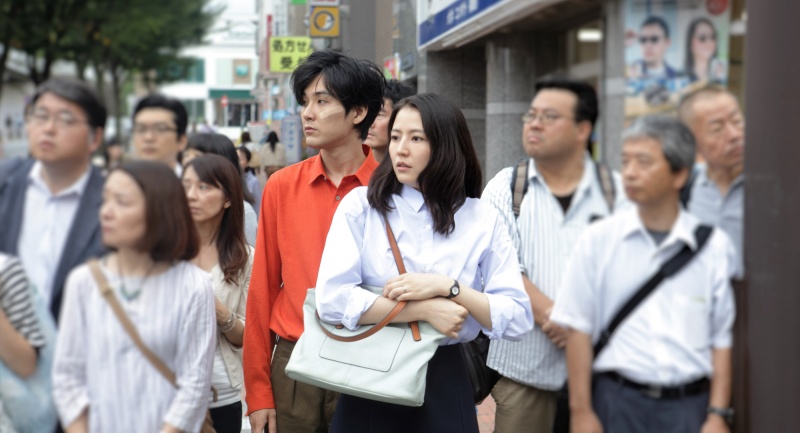
BEFORE WE VANISH (Japan, dir. Kiyoshi Kurosawa)
A confused housewife and a skeptical journalist finds themselves in the midst of a stealth invasion of Earth by aliens who possess the bodies of humans. These aliens choose “guides” to help them while they literally steal concepts from the minds of other people: When one of them steals the idea of “family” from a young woman, she reacts in revulsion when her sister tries to give her a hug. The three aliens that have arrived as a scouting party are somehow quickly found out by authorities, who respond by relentlessly hunting them down in hopes of stopping the invasion. But how do you stop an enemy that is an invisible intelligence that can move between bodies at will? And is it already too late? Kiyoshi Kurosawa’s BEFORE WE VANISH is the legendary director’s return to Japan after his French-language film DAGUERROTYPE, and it’s something of a departure for him in that it features quite a bit of effective humor in addition to its heady sci-fi trappings. It’s probably his funniest film, although there’s not much in the way of competition given how downbeat his work tends to be. There are some exciting action sequences and some really interesting ideas at play here, but the film is far too long and it looks oddly cheap–the digital video look here is more “TV movie” than sci-fi blockbuster. Despite these issues, its mix of humor, action, and quirky approaches to sci-fi ideas make BEFORE WE VANISH an intriguing change of pace from one of Japan’s most fascinating directors.
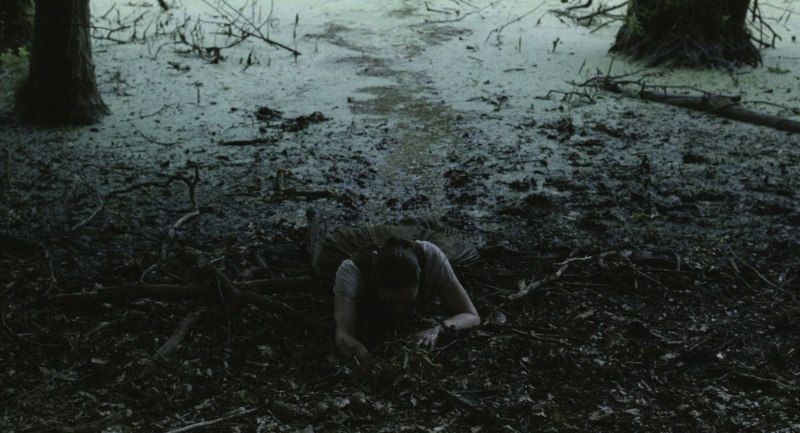
HAGAZUSSA – A HEATHEN’S CURSE (Germany, dir. Lukas Flegelfeld)
In 15th century Europe, Albrun (Aleksandra Cwen) is a young woman who lives in the remote cabin where she and her mother were all but banished by the local village. The villagers despise and fear the women in equal measure, believing them to be witches because they refuse to follow the Christianity that has established itself in more “civilized” places. HAGAZUSSA plays almost like a hybrid of two excellent recent horror films: Its period setting and terror of the supernatural recalls THE WITCH, while its structure and focus on a central female character echoes THE EYES OF MY MOTHER. While both of those films had a claustrophobic quality that contributed to the unease they inspired, HAGAZUSSA takes full advantage of the gorgeous and imposing vistas of its European setting. It really feels like a black metal album cover come to life with its sweeping vistas of mist-shrouded forests clinging to dark mountains. An excellent score contributes to the film’s bleak, brutal atmosphere. This would make a fantastic double feature with Rainer Samet’s NOVEMBER, to which it feels something like an even darker and less playful cousin–each film portrays life in a world largely pagan where Christianity inspires strange (and potentially dangerous) superstition.
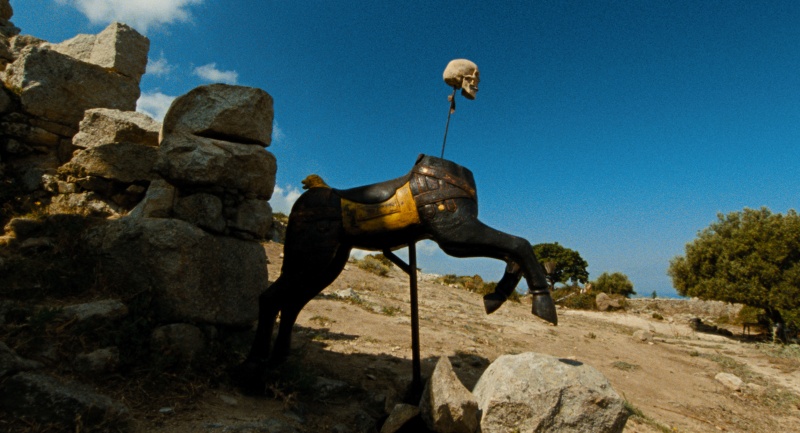
LET THE CORPSES TAN (France/Belgium, dir. Hélène Cattet & Bruno Forzani)
It’s July, and eccentric Madame Luce (Elina Löwensohn) is playing host to her lawyer and some of his friends in her home, a jumble of ruins on a high cliff overlooking the sea. The sun bakes the stone and soaks everyone in sweat, and that’s before Luce’s houseguests suit up in Frankenstein masks to rob a shipment of 250kg of gold from an armored truck. On their way back to Luce’s compound, they pick up a pair of women and a child who turn out to be the wife, maid, and son of a washed-up novelist who is also hiding out with Luce. The boy is in the middle of a custody battle, and both his appearance at a local cafe and the robbery draws the attention of a pair of motorcycle cops who head to Luce’s to scout the situation. Soon, the ruins echo with the sound of gunfire and everyone is forced into uneasy alliances in hopes of getting out alive–and with the gold. LET THE CORPSES TAN is the third feature from married directorial duo Hélène Cattet & Bruno Forzani following AMER and THE STRANGE COLOR OF YOUR BODY’S TEARS. While their previous features used the cinematic vocabulary of the Italian giallo film in an experimental and virtually non-narrative context, this one has a relatively straightforward storyline. In addition to their giallo influences the filmmakers incorporate touches of the “Spaghetti Western” and Poliziotteschi, and the results are spectacular. There are still bizarre excursions in the form of a recurring dream/nightmare about a silhouetted woman who seems to represent the greed that binds the characters to their fates, but for the most part this is a wildly stylish and tense action/thriller. While their previous features have felt something like Cattet and Forzani doing the greatest hits of Italian genre cinema (which I don’t mean as a complaint, as their films are two of my favorites of the last decade), LET THE CORPSES TAN feels like the pair striking out to apply their signature style to create a more accessible film that is still unmistakably their own.

ANNA AND THE APOCALYPSE (USA/UK, dir. John McPhail)
It’s Christmas time, and Anna (Ella Hunt) is facing down the biggest terror of her life: Telling her father Tony (Mark Benton) that she’s planning to postpone college to travel for a year after graduation. When her best friend Lisa (Marli Siu) accidentally lets it slip on their ride to school, Tony goes ballistic and Anna storms off in anger. Things at school aren’t great, either, with cruel headmaster Savage (Paul Kaye) chomping at the bit to make big changes that will make everyone miserable on top of trying to kill a school newspaper story that means a lot to aspiring reporter Steph (Sarah Swire). That same evening is the big school Christmas program, but Anna and her best friend John (Malcolm Cumming) have to miss it to work at the bowling alley. The next day, they find no one has returned from the Christmas show because the zombie apocalypse has broken out. Anna and her friends plan to fight their way across the city to head to the school where Tony and the other survivors are holed up waiting for the military to come rescue them, but zombies may not be the biggest threat to their continued survival. It’s impossible to describe ANNA AND THE APOCALYPSE without using a torrent of modifiers–this may be the first Scottish teen zombie horror comedy Christmas musical ever made, and it’s exactly what that sounds like. It’s hugely entertaining, with a spectacularly charming cast and a ton of great songs by Roddy Hart and Tommy Reilly. Special mention must be made of the hilariously off-color Christmas song performed by Marli Siu (which fully deserves to be a new standard), and Paul Kaye’s excellent solo number near the end. There are also buckets of blood lest anyone forget this is a zombie movie under all those show-stopping numbers. ANNA AND THE APOCALYPSE is one of those rare independent films with absurd ambition that it actually fulfills, and one of the most purely fun movies of the year.
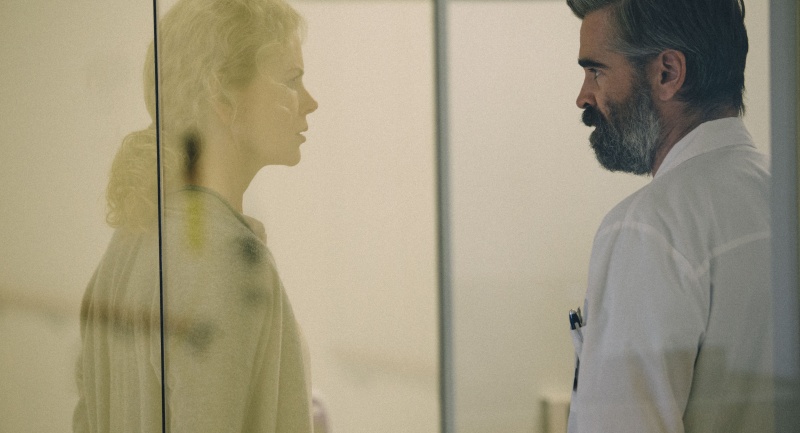
THE KILLING OF A SACRED DEER (UK, dir. Yorgos Lanthimos)
Steven Murphy (Colin Farrell) is a heart surgeon, happily married to Anna (Nicole Kidman) and father to teenager Kim (Raffey Cassidy) and young son Bob (Sunny Suljic). Steven regularly visits with a teenage boy named Martin (Barry Keoghan), whose relationship with Steven initially seems innocuous if uncertain. But as superficially amicable as Steven and Martin appear, Martin harbors sinister intentions. He ingratiates himself with Steven’s family– especially Kim–and inexplicably enacts a bizarre, cruel plan of revenge. Yorgos Lanthimos came to major international attention with DOGTOOTH, and his first English-language film THE LOBSTER garnered him an Academy Award nomination for Best Original Screen along with his regular collaborator Efthymis Filippou (who also co-wrote Athina Rachel Tsangari’s CHEVALIER). His latest film is perhaps his most accessible from a narrative standpoint, but it’s also his most unsettling, which is really saying something. THE KILLING OF A SACRED DEER takes place among characters who speak almost exclusively in flat monotones, more often than not about prosaic matters of minimal import. This enhances the creeping sense of nightmarish dread the film instills that ramps up as the story progresses, and makes it genuinely upsetting when characters allow their facade to break: Martin breathlessly explaining his intentions to Steven and later making inane small talk with Anna after discussing whether or not his plan is “fair” are scenes both blackly funny and seriously disturbing. That streak of pitch-black humor runs throughout the film, underpinning a story that moves inexorably forward toward a gut-wrenching finale that is equally absurd and horrifying. That’s a difficult balance, but Lanthimos navigates it with a seemingly superhuman confidence and calm.
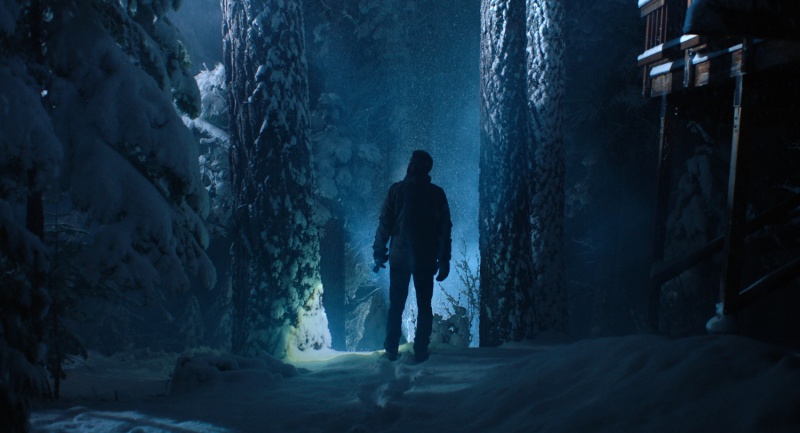
APPLECART (USA, dir. Brad Baruh)
Casey and James Pollack (Brea Grant and AJ Bowen) are heading to a cabin in the woods for a snowy weekend getaway with their teenage kids Jessica (Sophie Dalah) and Jason (Joshua Hoffman) and Jessica’s friend Becky (Elise Luthman). While everything seems fine, the audience knows something is about to go very wrong when we are shown the opening sequence of an episode of the TV series INSIDE CRIME about the murder of the Pollack family at the hands of Casey. When we return to the Pollacks, James finds a woman unconscious in the woods and brings her back to the cabin–when she wakes, she introduces herself as Leslie Bison (Barbara Crampton) and immediately makes everyone very uncomfortable with some inappropriate behavior. APPLECART continues on these parallel tracks, cutting back and forth from the story as it unfolds and the 100% pitch-perfect replica of an Investigation Discovery-style “true crime” TV show. This makes it feel a bit patchwork, and the TV segments undercut the tension of the main narrative, but the film has weird energy to burn and a career-best performance from Barbara Crampton. The whole cast is great, but Crampton is incredibly funny and menacing, much different from the typical roles we’ve grown used to seeing her in lately. It would be worth watching APPLECART for her even if it didn’t have some impressively gruesome and imaginative practical effects that help make up for its narrative problems.
- [CINEPOCALYPSE 2017] FIVE FILMS YOU CAN’T MISS AT CINEPOCALYPSE! - October 31, 2017
- Hop into Jason’s Ride for a Look at the Wild World of Vansploitation! - August 11, 2014
Tags: AJ Bowen, Austin, Barbara Crampton, Belgium, Brea Grant, Bruno Forzani, Colin Farrell, Fantastic Fest 2017, France, Germany, Hélène Cattet, japan, John McPhail, Kiyoshi Kurosawa, Nicole Kidman, The UK, Yorgos Lanthimos

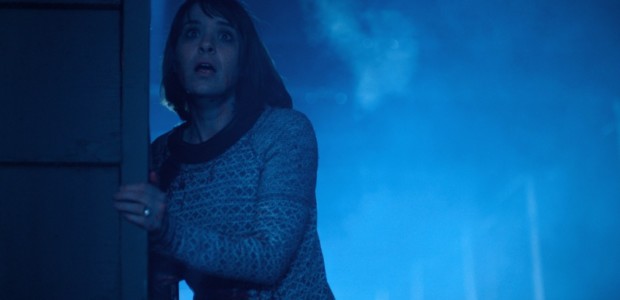




No Comments